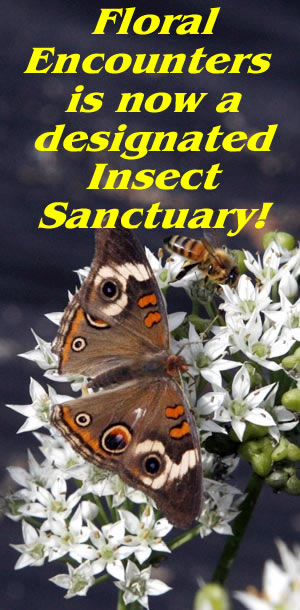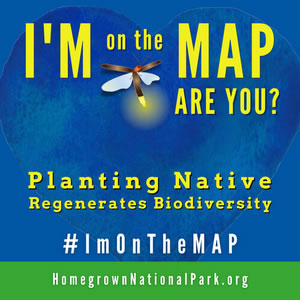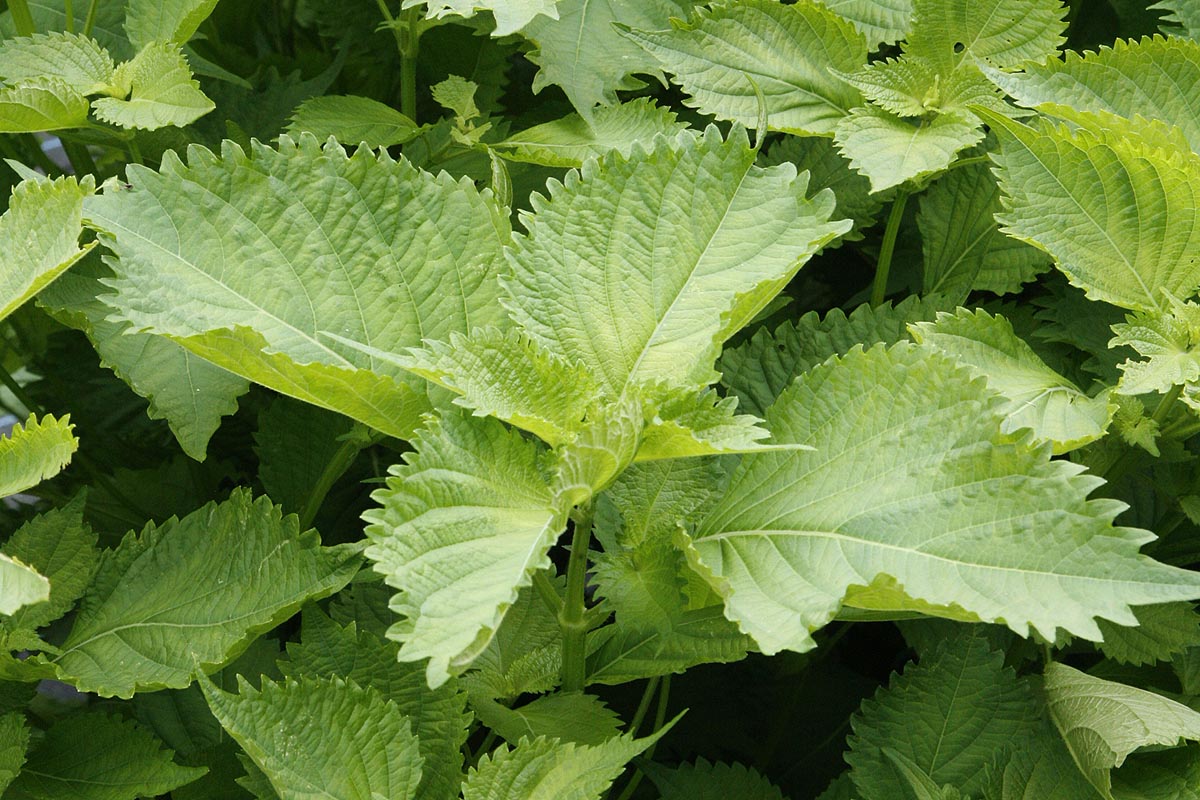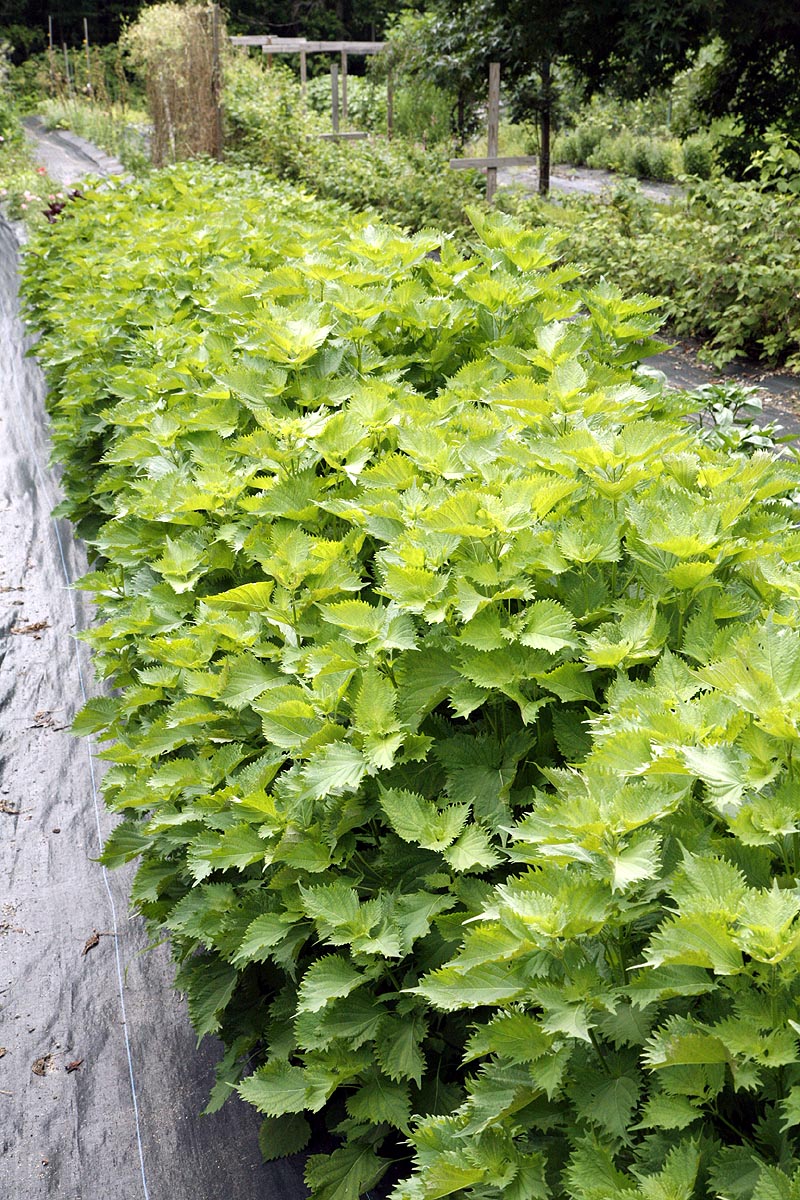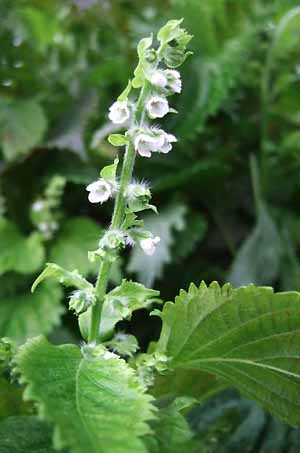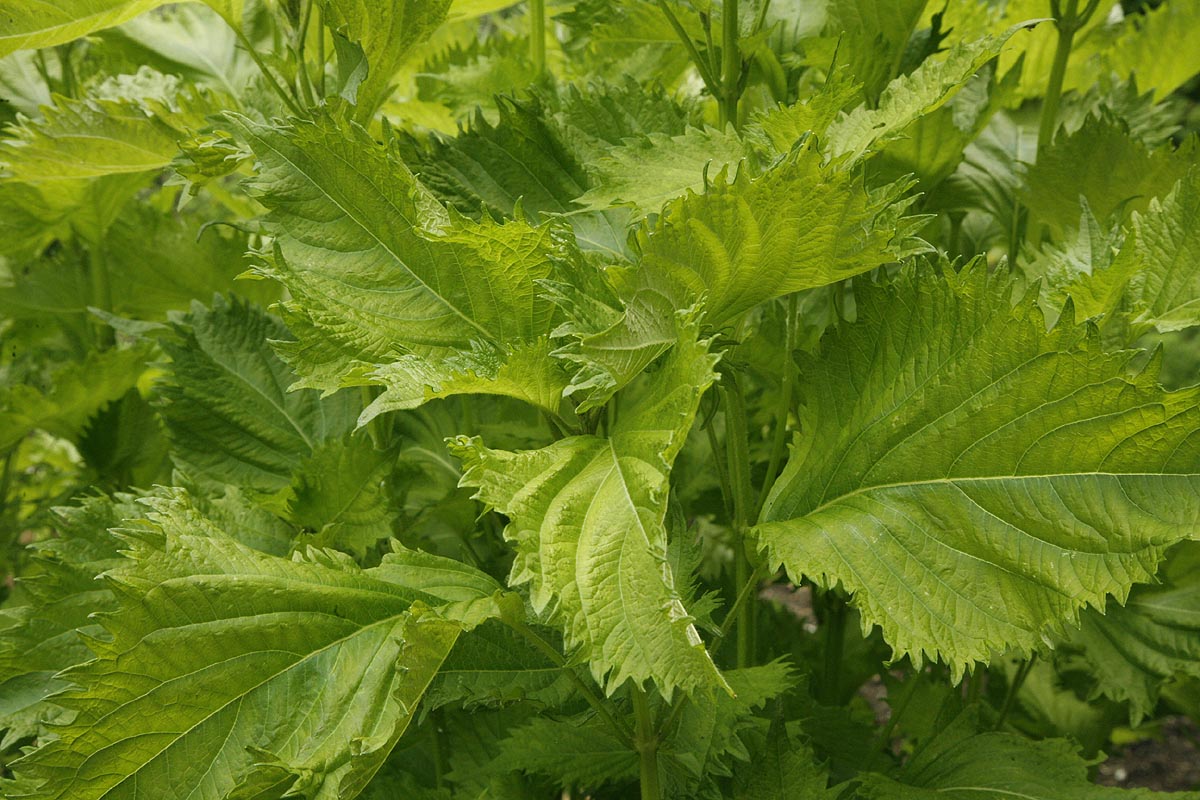The most popular herb in Japanese cuisine. Shiso, also known as Green Perilla or Aojiso, is a lovely plant both as an ornamental and as a food Ornamentally it is grown for its interesting leaves which are crinkly and deeply veined making them stand out if used in a flower bed. Since it can reach 4 feet in height it makes a good back border plant. It is very aromatic and the slightest touch will set off the scent, so don't plant it too close to your deck unless you love the smell. It's tough, it does very well in hot sunny locations but can also thrive in some shade. It needs very little maintenance once established and as an ornamental its pretty drought tolerant. More water is needed if you want to harvest the leaves.
Wildlife don't eat it. Deer and rabbits avoid it. Since it requires short days to flower it produces blooms late in the fall when most other plants have ceased blooming. This makes it ideal for gardens that encourage pollinators as it is a source of nectar when there is little else available. Honey bees, native bees and butterflies flock to the flowers.
There are two major kinds red and green. Each have their own particular aroma and flavor but the basic appearance is mostly the same.
Green perilla or true shiso is a very aromatic plant. The aroma is strong and even just moving the stems will create a strong scent in the air. The flavor is hard to describe. It is a combination of cinnamon, anise, basil and some say cloves with a hint of citrus all wrapped into one. It's pretty strong: even chewing a little off one leaf can be enough for some people.
Sowing indoors. Start seeds about 6 weeks before last frost, use good sterile seeding mix in seed trays, individual cells or small pots and place in good bright light. Surface sow or only lightly cover seeds. See general growing instructions for more detailed information. Usually germinate with 8-10 days. Transplant into individual pots once they are large enough to handle and grow on to about 4-5 inches (10-12 cm) tall before transplanting to final location.
Direct sowing. Prepare bed taking care to remove all weeds and ensure surface soil is fine. Only lightly cover seeds and keep moist. If temperatures are warm germination is usually within two weeks but can be longer if temperatures drop below 68 F (20 C) and surface sow the seeds.
If bushy plants are desired pinch off the tops to encourage branching. Flowers can be pinched off if leaf production is desired. If allowed to flower, cut flower stalks when finished to prevent self seeding. Plant will seed prolifically if allowed.
Pollinators and wildlife with Green Shiso (Perilla frutescens).
Requires short days to flower so it begins blooming much later in the year than many other plants. the flowers are smaller but prolific and ladened with nectar and pollen which makes them a magnate for butterflies, bees, especially bumble bees and honey bees plus a whole lot of other beneficial insects. Sometimes humming birds will use them but in many cooler climates they have migrated south before this flowers.
Due to its aromatic leaves its not bothered by other wildlife eating it and there are not that many pests either.
If drying for later use, take whole branches of leaves just before flowering when the flavor is at its peak. Cut the whole stems, bunch and hang upside down in a warm dry dark space until dry. Then strip the leaves from the stalks and store in air tight containers in a cool dark place to retain the flavour as long as possible.
If harvesting seed use a large bin to collect whole branches at one time.
Seedlings are added to salads, older leaves are used as a garnish or flavoring in many dishes. The older leaves are also salted and used as a condiment for tofu and as a garnish for tempura; it also makes a nice pesto. They are one of the ingredients in 'Shichimi' or 'seven spice' mixture. Essential oils extracted from the plant are also used as a food flavoring in candies and sauces.
The crushed leaves rubbed onto the skin serve as an insect repellant; it is reported to be especially effective against ticks
Perilla Oil is obtained by pressing the seeds of perilla, which contain 35 to 45 percent oil. It is most commonly used in Asia where it is valued more for its medicinal benefit as it is a very rich source of omega-3 fatty acid.
Flower spikes can be dried and used in floral arrangements. They can be spray painted and used as a filler plant.
Other names
Ppurple mint, Japanese basil, wild coleus, Rattlesnake Weed, Beefsteak Plant, Ooba, perilla leaf, perilla, Aojiso


